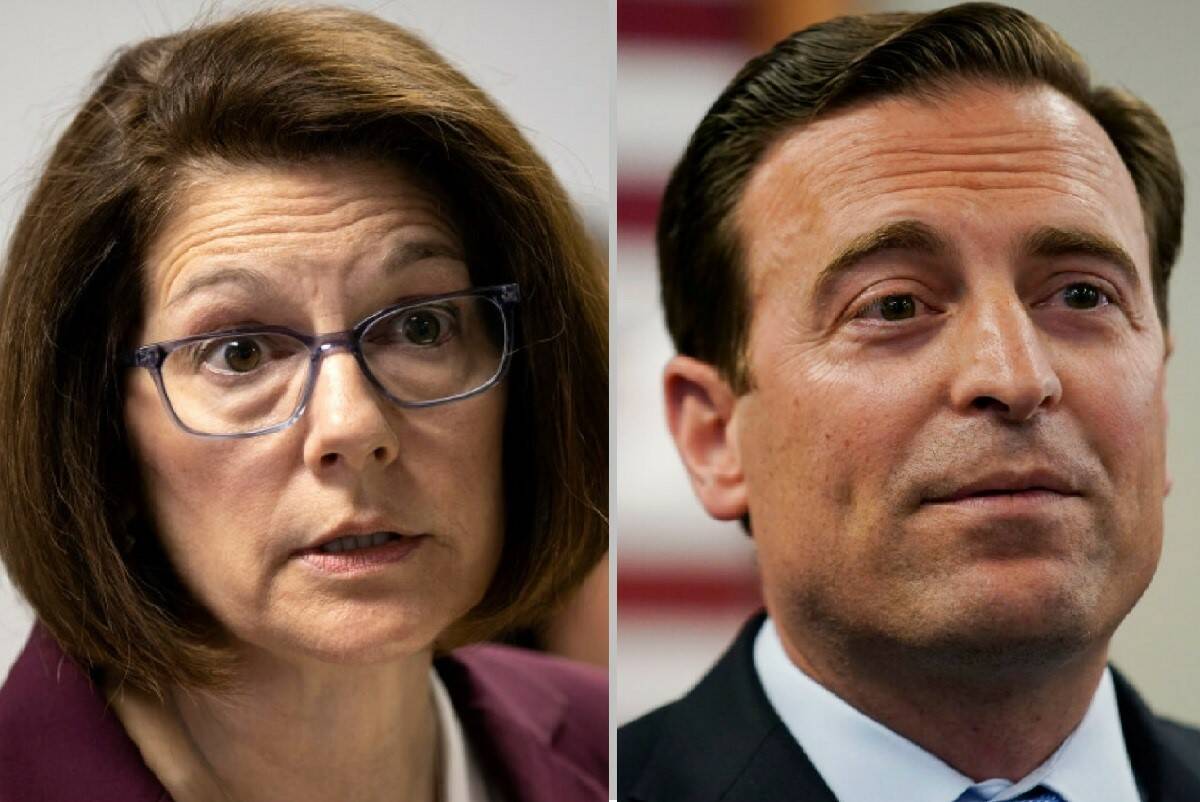New polls show Cortez Masto-Laxalt Senate race a toss-up
With one week until Election day, the latest batch of polling shows Nevada’s pivotal U.S. Senate race between incumbent Democrat Catherine Cortez Masto and Republican challenger Adam Laxalt is incredibly close.
Three of four polls released since Monday by major, nonpartisan public polling firms showed Cortez Masto up slightly or tied with Laxalt, but with the results within their respective margins of error — essentially a statistical tie. The fourth poll, which was released Tuesday by Emerson College Polling/KLAS-TV/The Hill, showed Laxalt with a roughly 5 percentage point lead over the vulnerable incumbent, leading 51 percent to 46 percent.
Nevada’s Senate race is one of the most closely watched political battles in the country this midterm cycle, as it will play a significant role in determining which party controls the Senate going into the second half of President Joe Biden’s first term.
For Laxalt, the latest Emerson poll result marked an eight percentage point bump since the firm’s last survey of Nevada in mid-September, while Cortez Masto saw a four-point jump.
But Emerson’s newest poll is a bit of an outlier, as it is the only recent poll from a nonpartisan group showing such a wide margin. The other three show a much tighter race:
A Suffolk University/USA Today poll of 500 likely voters also released Tuesday showed Cortez Masto with a 1-percentage point lead, 45-44, over Laxalt.
An OH Predictive Insights/Nevada Independent poll released Monday had Cortez Masto up two percentage points, 43-41, among 600 likely voters.
And a Siena College/New York Times poll also released Monday showed the race in a dead heat, 47-47.
All four polls were conducted in late October.
Polling averages from political analysis websites also show an extremely tight race, with RealClearPolitics showing Laxalt with a 1.3 average percentage point lead and FiveThirtyEight showing Laxalt with an even slimmer 0.2 percentage point margin.
Confidence in political polling has waned in recent years, especially after pollsters were so far off in the 2016 and 2020 elections.
In a column about the Siena College poll Monday, Nate Cohn, The New York Times’s chief political analyst, wrote about why there have been so few polls from reputable pollsters in major battleground states in the months leading up to the election.
“The drought is partly because of rising costs — our October national survey was eight times as expensive as our final polls in 2016, on a per-interview basis,” Cohn wrote. “But it’s also because of a crisis of confidence among the traditional pollsters — Times/Siena included — who don’t have a great explanation for the poor results in 2020 and are understandably treading a little lightly.”
Contact Colton Lochhead at clochhead@reviewjournal.com. Follow @ColtonLochhead on Twitter.























